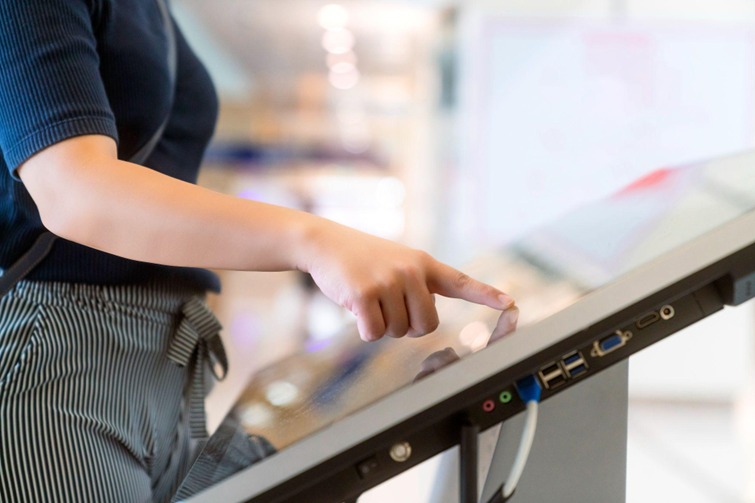From QSR to Fine Dining: How Restaurants Are Adapting to Self Ordering Systems

Technology is changing the way we eat, not just what’s on the plate, but how we place our order. The rise of self-ordering systems is transforming the dining experience across the board.
What began as a tech-forward experiment in fast food chains has now made its way into fast casual, casual dining, and even fine dining restaurants. The shift is about accuracy, convenience, and reimagining service in a digital-first world.
Let’s explore how different types of restaurants are embracing this change with the help of a restaurant kiosk system.
The growing popularity of self-ordering systems
Self-ordering systems come in various forms, like touchscreen kiosks, tablets, and even mobile app interfaces. What they all have in common is this: they allow guests to place their own orders without relying on a waiter or cashier.
These systems are becoming more popular for good reasons. Restaurants are dealing with staffing shortages, longer wait times, and rising operational costs.
Customers, on the other hand, are looking for quicker service, fewer mistakes, and more control over their dining experience. It’s a win-win when done right.
Quick Service Restaurants (QSRs): Where it all started
Fast food chains were among the first to adopt self-ordering kiosks. Think of the last time you visited a McDonald’s. Chances are, you used a digital screen to order your meal, customised it just how you like it, and paid, all within a few taps.
For QSRs, these systems have become essential. They reduce queues, increase order accuracy, and boost sales by prompting customers with extras they might not have considered. The simplicity and speed align perfectly with what fast food is all about.
Fast casual and casual dining: Finding the right balance
Restaurants like Panera Bread, Shake Shack, and Chilli’s have taken things a step further. These venues still offer a relaxed dining experience, but now complement it with tech like table-side tablets or front-of-house kiosks.
The goal here isn’t to replace human services but to enhance them. Guests can browse the menu, place orders when ready, and even pay the bill without waiting for a server.
Meanwhile, staff can focus on hospitality like checking in, answering questions, and delivering food. It’s about blending convenience with care.
Fine dining: A careful, elegant transition
You might be surprised to hear that even fine dining venues are exploring self-ordering systems. Of course, this doesn’t mean ordering filet mignon from a giant touchscreen in the middle of the room.
Instead, technology is being used more subtly, perhaps through sleek tablets with digital menus or QR-code-based ordering that still allows for personal interaction.
The idea is to improve the experience without taking away its charm. Fine dining spots can give guests more information about dishes, wine pairings, or ingredients while keeping the ambience intact through a well-designed restaurant kiosk system.
Why restaurants are embracing the restaurant kiosk system
No matter the type of restaurant, the benefits of using a kiosk system are fairly consistent:
- Better accuracy: Orders go straight from the guest to the kitchen, lowering the chance of miscommunication.
- Faster service: Especially during busy hours, self-ordering reduces bottlenecks at counters or tables.
- Higher spend per guest: Kiosks can be programmed to suggest add-ons, which often leads to larger orders.
- Improved efficiency: With fewer people needed to take orders, staff can be reallocated to other tasks.
- Customer satisfaction: People enjoy the autonomy and pace of placing their own orders, especially when they’re not in a hurry.
All these factors contribute to a smoother, more satisfying dining experience.
The challenges worth considering
That said, self-ordering systems do come with their own set of hurdles. The upfront cost of the hardware and software can be significant, especially for small or independent restaurants.
Then there’s the matter of maintenance, software updates, and training staff to assist customers who may be unfamiliar with the technology.
Accessibility is another key point. A good system should cater to everyone, including older guests, people with disabilities, and those who prefer human interaction. The best approach often involves a hybrid model, offering both technical and traditional service options.
Final thoughts
From fast food counters to candlelit tables, self-ordering technology is quietly reshaping the way we dine.
It’s worth exploring how a restaurant kiosk system could elevate your service, streamline operations, and meet the changing expectations of today’s diners, whether you’re managing a busy burger joint or curating a gourmet tasting menu.

Source: From QSR to Fine Dining: How Restaurants Are Adapting to Self Ordering Systems



